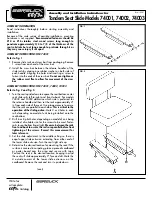
Protocol Analysis
R&S
®
Scope Rider RTH
203
User Manual 1326.1578.02 ─ 12
9.5
CAN and CAN FD (Options R&S
RTH-K3, R&S
RTH-
K9)
CAN is the Controller Area Network, a bus system designed by Bosch for use within
automotive network architecture, for example, for brake, power train and engine man-
agement. Today, it is also used in many other systems, for example, in industrial
machines, aerospace, subsea, merchant marine etc..
More than 20 years after the invention of CAN, communication needs have increased,
and CAN has reached it's bandwidth limits in some application fields. Therefore, Bosch
specified an improved CAN protocol with flexible data rate - CAN FD. It introduces a
higher bit rate in the data phase up to 15
Mbit/s and an extended data field from up to
64 bytes.
The R&S
RTH provides decoding, triggering and searching CAN and CAN FD signals
with following options:
●
CAN: option R&S
RTH-K3
●
CAN FD: option R&S
RTH-K9, requires CAN option R&S
RTH-K3
9.5.1
The CAN/CAN FD Protocol
This chapter provides an overview of the protocol characteristics, frame types, informa-
tion transfer and message formats.
The CAN 2.0 specification defines two formats: the base CAN (version 2.0A) with an
11-bit identifier and the extended CAN (version 2.0B ) with a 29-bit identifier. Based on
theses specifications the CAN standard ISO 11898-1 was released, in 1993.
More than 20 years after the invention of CAN, communication needs have increased,
and CAN has reached its bandwidth limits in some application fields. Therefore, Bosch
specified an improved CAN protocol with flexible data rate - CAN FD. It introduces a
higher bit rate in the data phase up to 15 Mbit/s and an extended data field of up to 64
bytes. In 2015, the CAN FD specification has also been integrated in the standard ISO
11898-1.
CAN/CAN FD characteristics
Main characteristics of CAN/CAN FD are:
●
Differential signaling.
●
Transmission over two wires, high and low.
●
Multi-master, which means that any node can begin to transmit a message, when a
bus is free.
●
Bitwise arbitration.
Arbitration
Information transfer is done by carrier sense multiple access/bitwise arbitration (CSMA/
BA). Each node waits for a certain inactive period before it tries to send a message.
Collisions are resolved through a bitwise arbitration that is non-destructive.
CAN and CAN FD (Options R&S
RTH-K3, R&S
RTH-K9)
















































